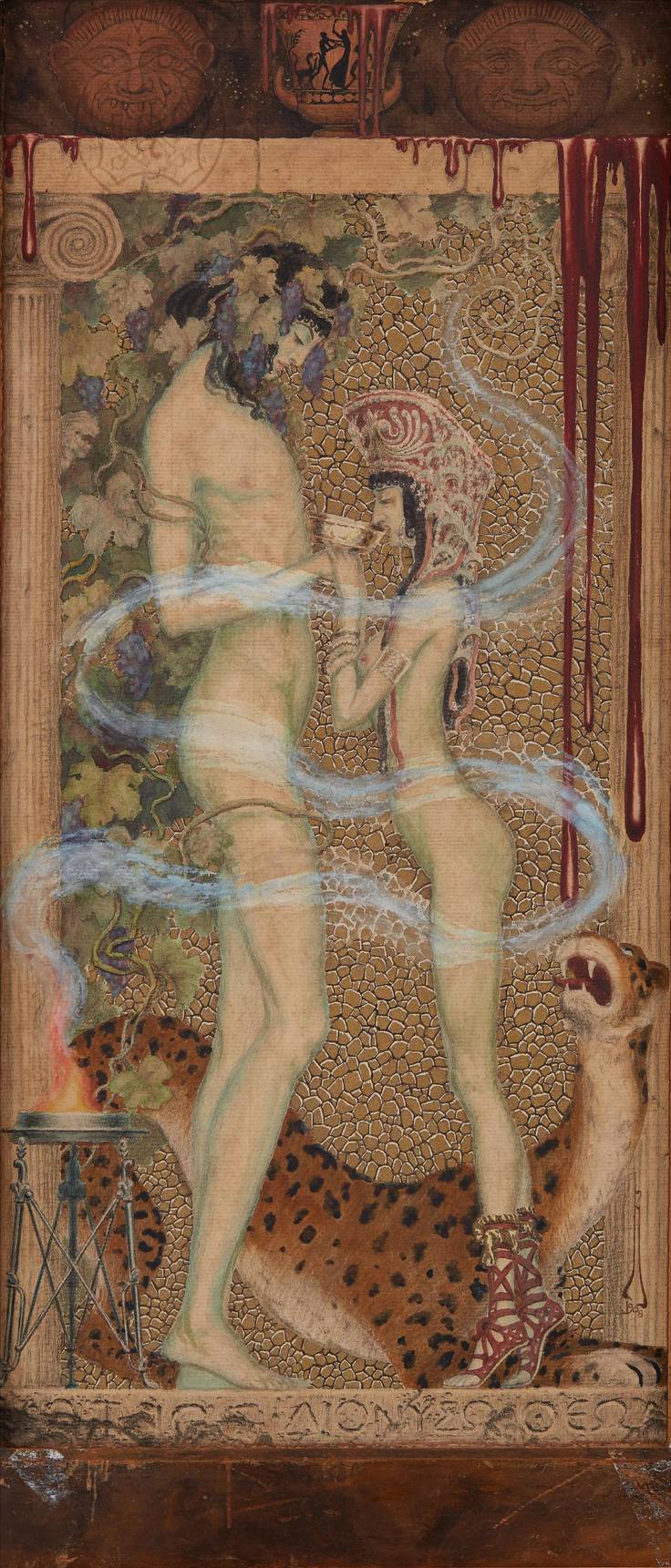Kalmakoff Nicolas (1872-1955) Dionysos, 1908
Lotto 109
35 00040 000
Signed lower left with a monoram NK 1908 Gouache, touche, pencil. gold and mixed Media on paper laid on cardboard
490 x 224 mm
Provenance : Private Collection, Switzerland
Dated 1908, it was painted the year in which Kalmakoff created the decor and costumes for a Russian production of Oscar Wilde's Salome that was so provocative it was closed on its first night.
In contrast with the delicate details of the two main figures in Dionysus, Kalmakoff expresses his fascination with the grotesque with the two faces at the top of the picture, and what looks like blood overflowing from the vase and dripping down the side of the image, into the leopard's mouth.
It's fitting that Dionysus was the Greek god not only of wine making, but also religious ecstasy, and the theatre.
Born to a Russian general and an Italian opera singer, Nicolas Kalmakoff was well known in St. Petersburg in the early 1900s, where he was admired by the artists associated with the magazine Mir Isskoustva.
However, this early success would not last, and while he continued to paint, he stopped exhibiting his works after 1928. By 1955 he was living an impoverished, hermetic life in Paris, dying in obscurity in a hospice at the age of 82.
Thereafter, his remaining paintings were forgotten, until they were discovered in a flea market by two friends, Bertrand Collin du Bocage and Georges Martin du Nord. Recognising the talent in these works, the two collectors were intrigued by this unknown painter, and in 1964 they organised an exhibition of his work at Galerie Motte in Paris. The exhibition proved popular, and thus it was only posthumously that Kalmakoff gained fame. Throughout his career, Kalmakoff's paintings frequently combine the spiritual with the erotic. As a boy he had a German governess who told him many fairytales, and both these and her teachings about the diabolical nature of the Devil made a lasting impression on Kalmakoff.
As an adult, he was known to associate with mystical circles, particularly the Skoptzy sect to which Rasputin belonged. Kalmakoff also had a flair for the dramatic, as could also be seen in his work for the theatre, where he created extravagant decor and costumes for a number of Russian stage productions, including for Serge Diaghilev's Ballets Russes.


